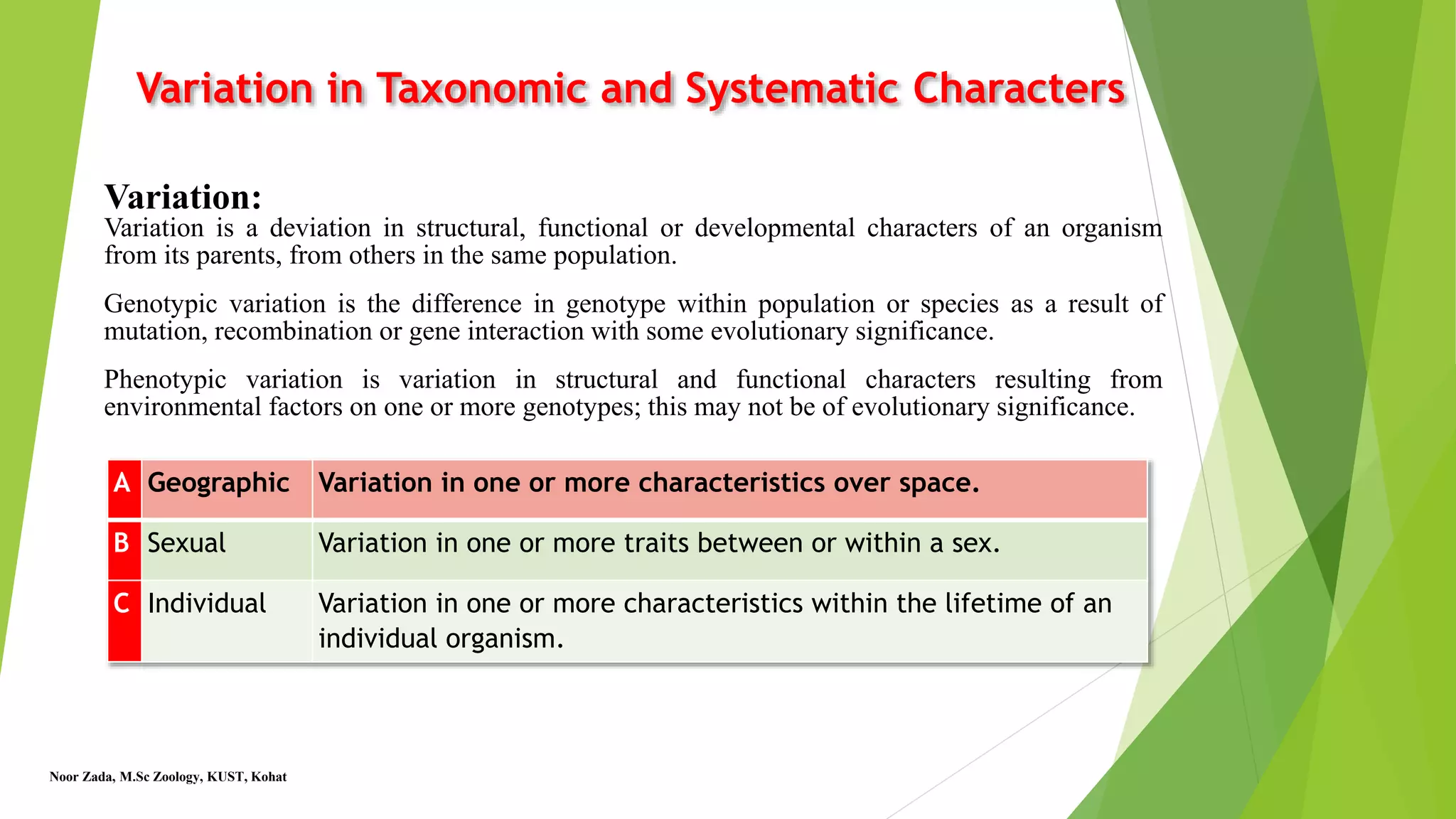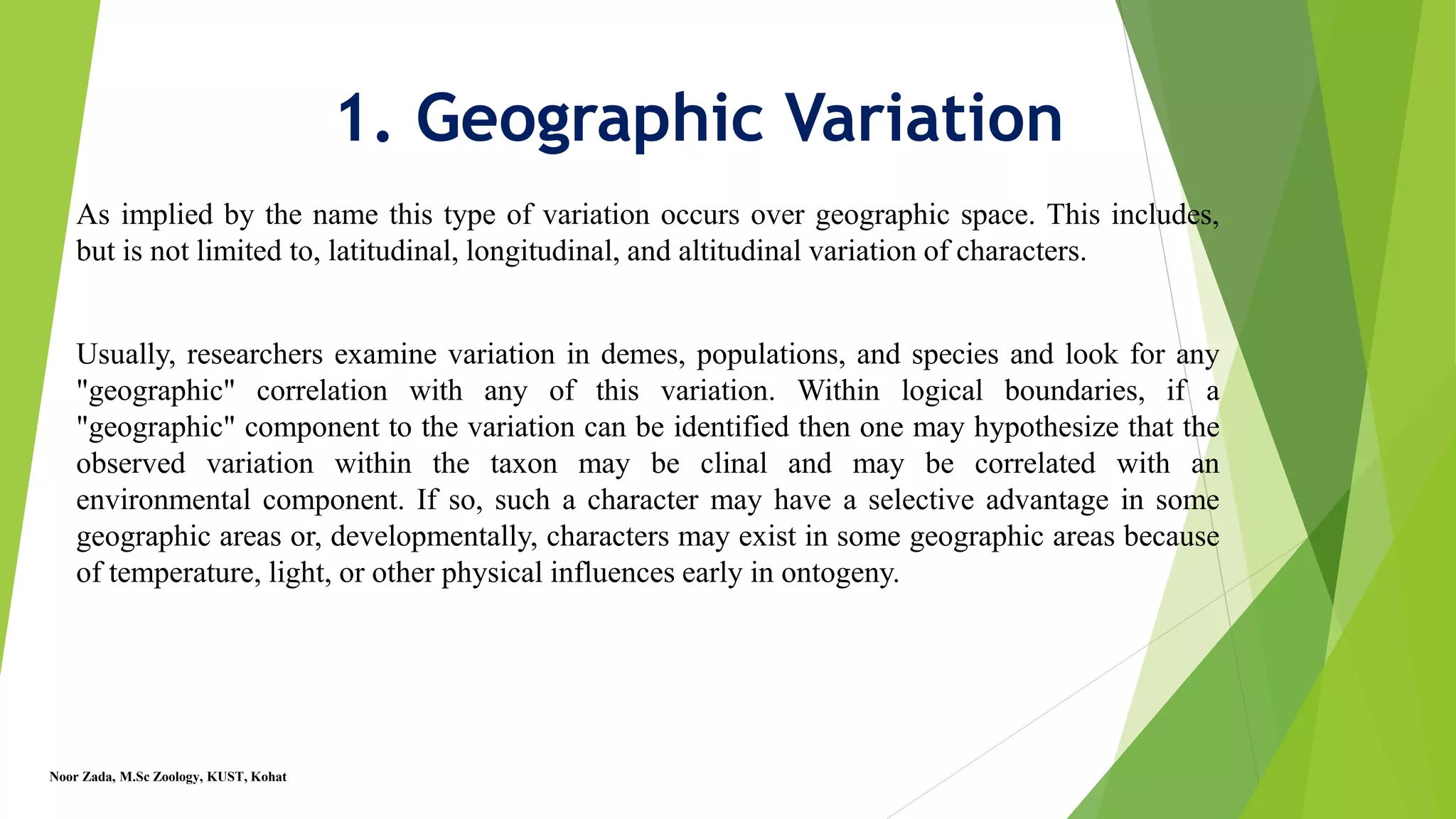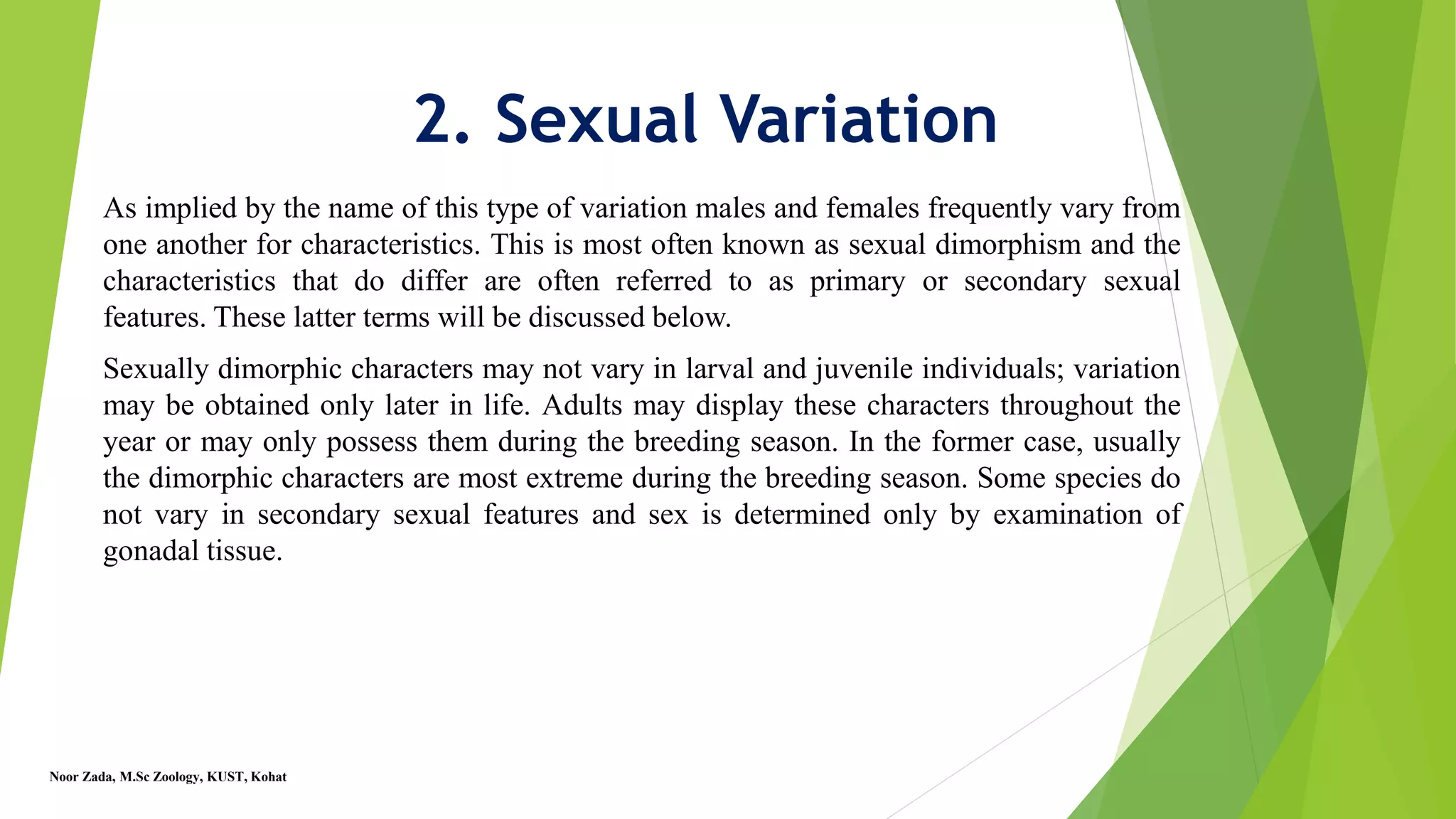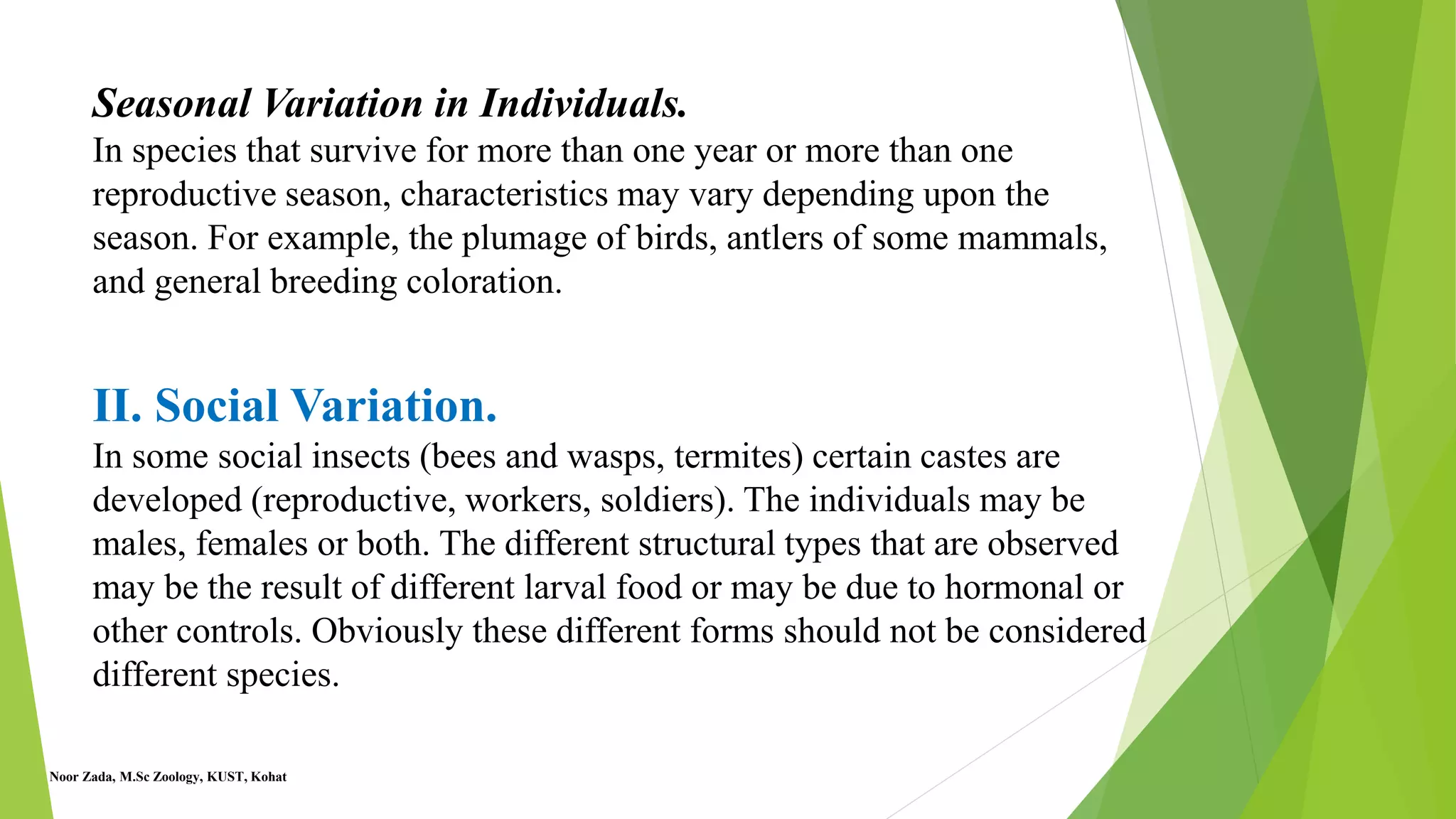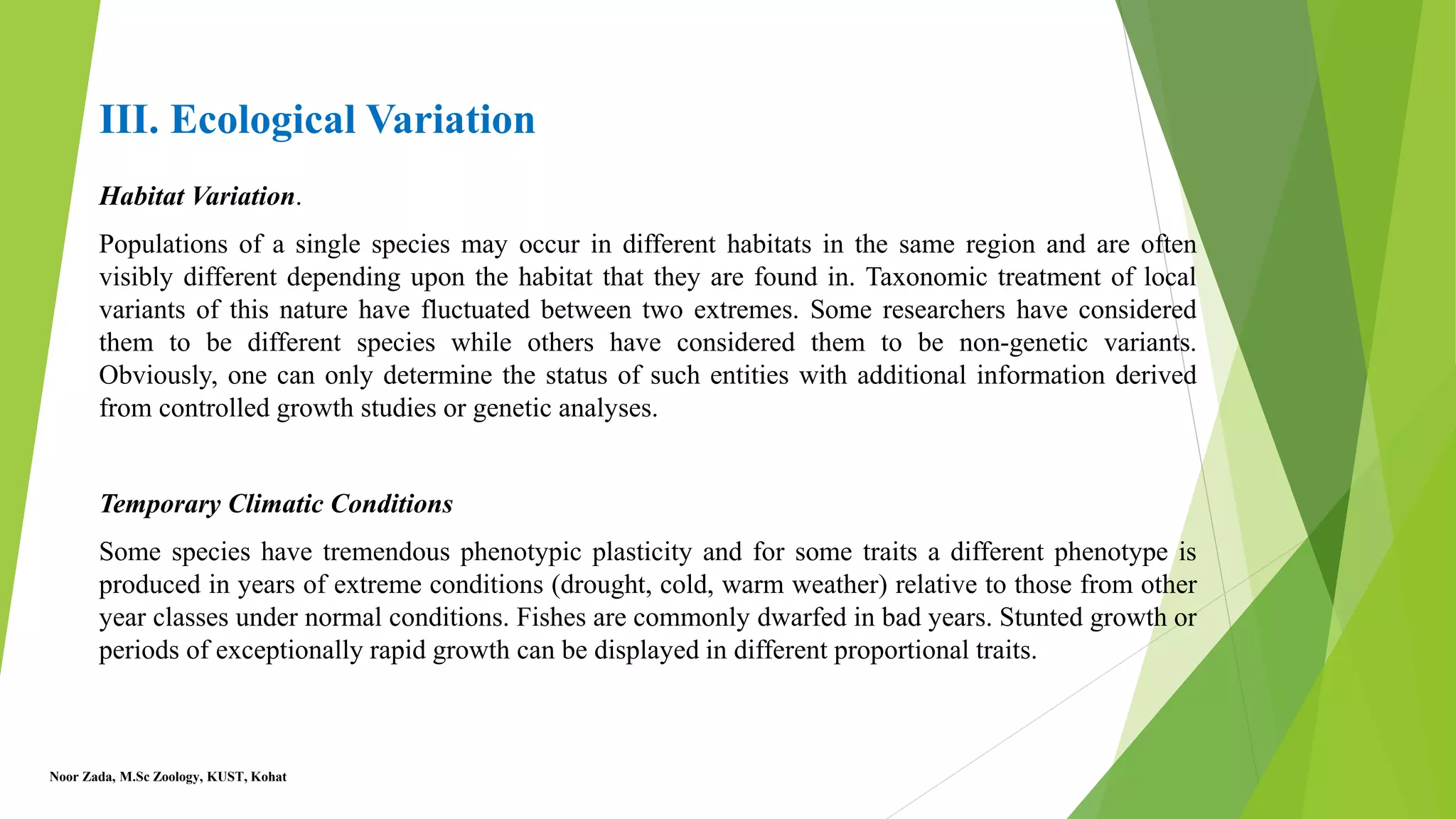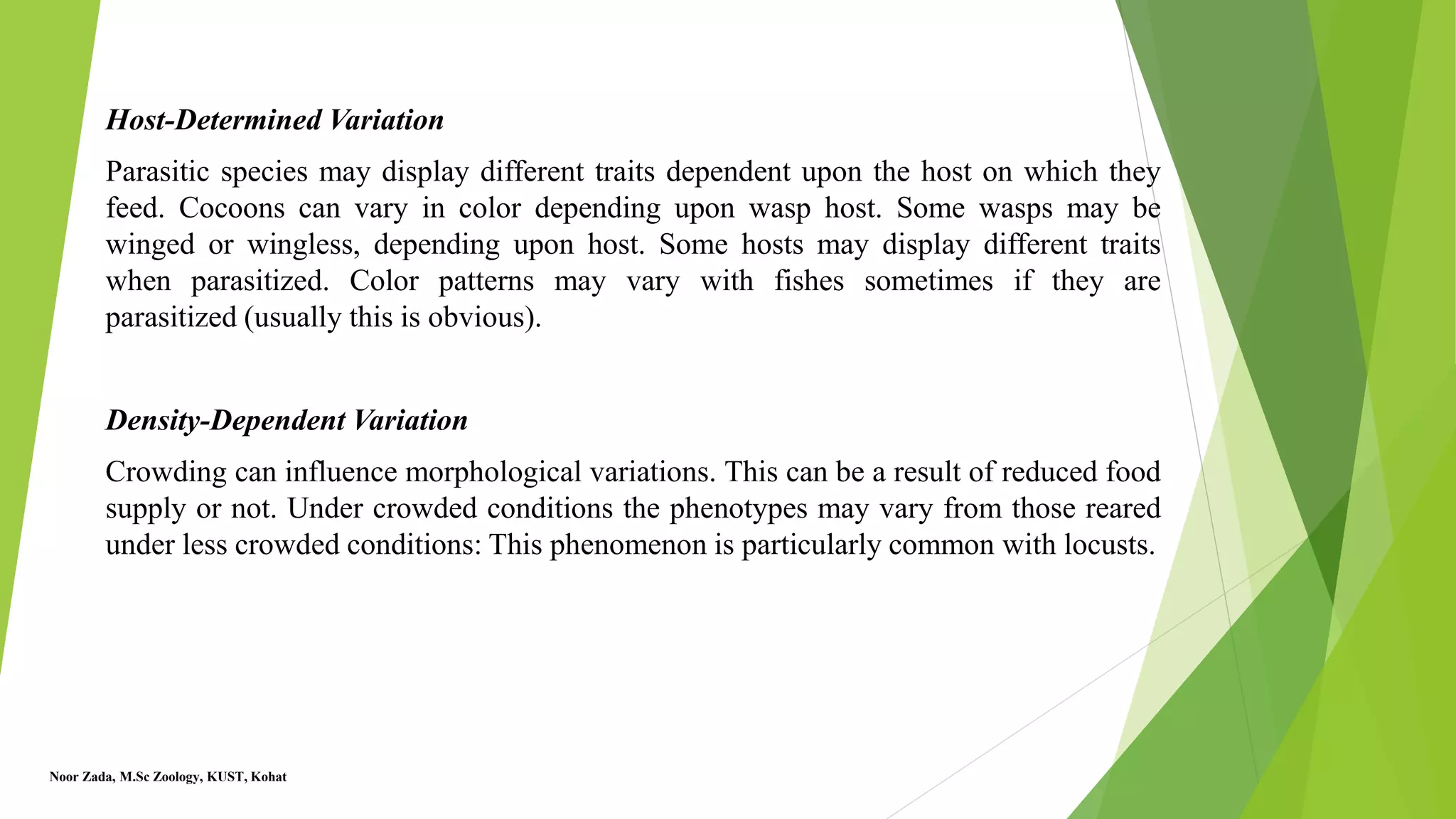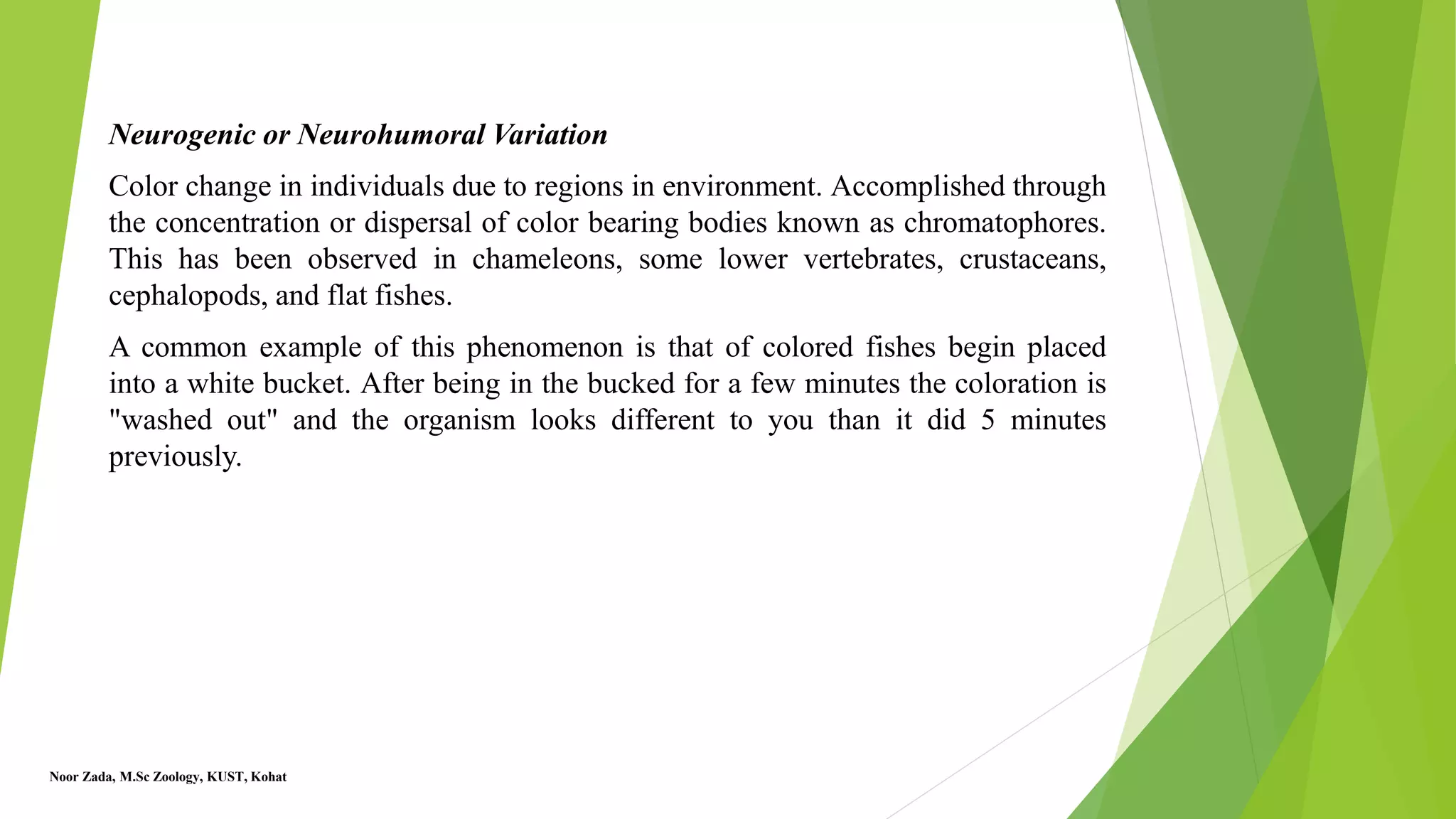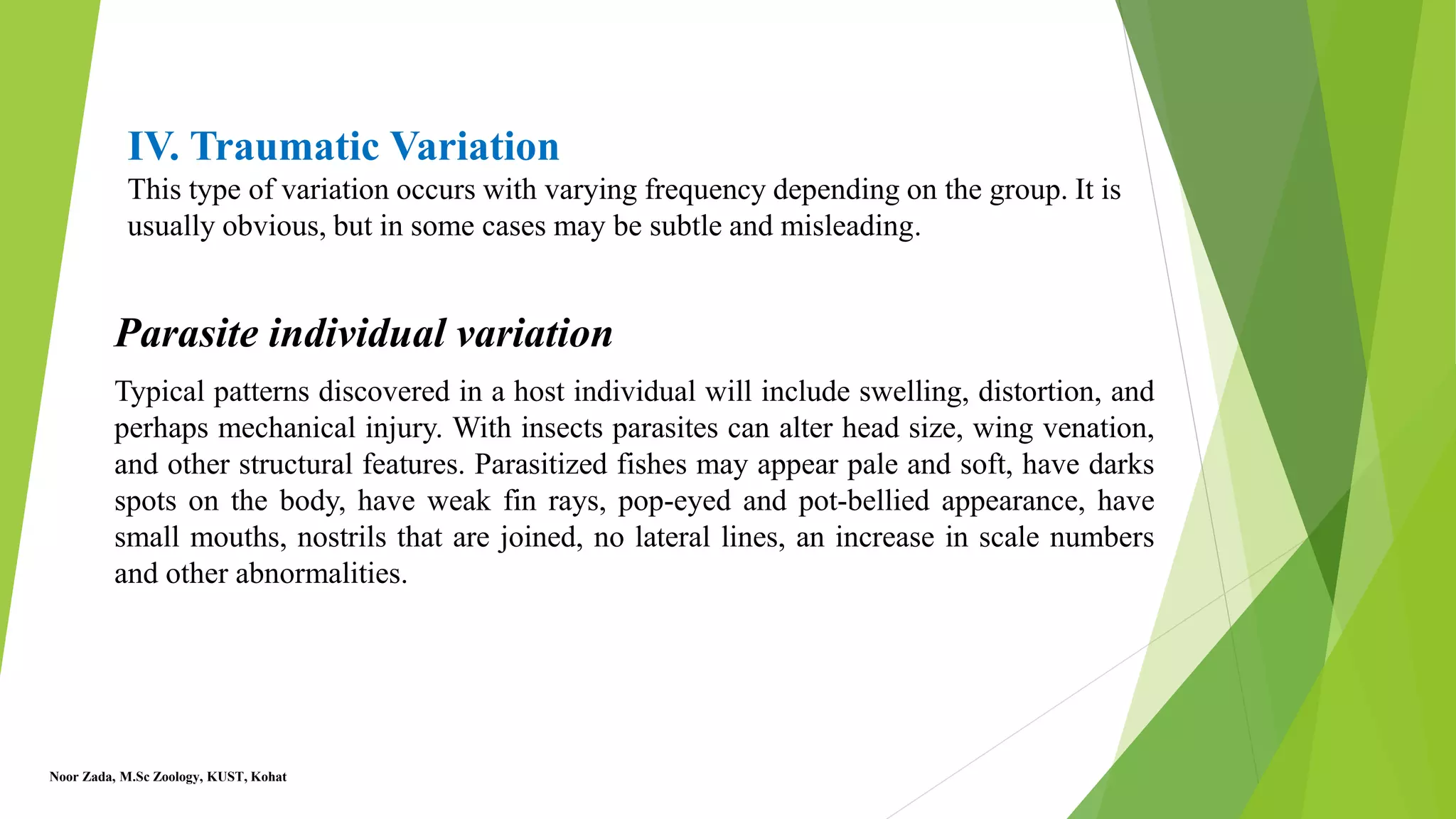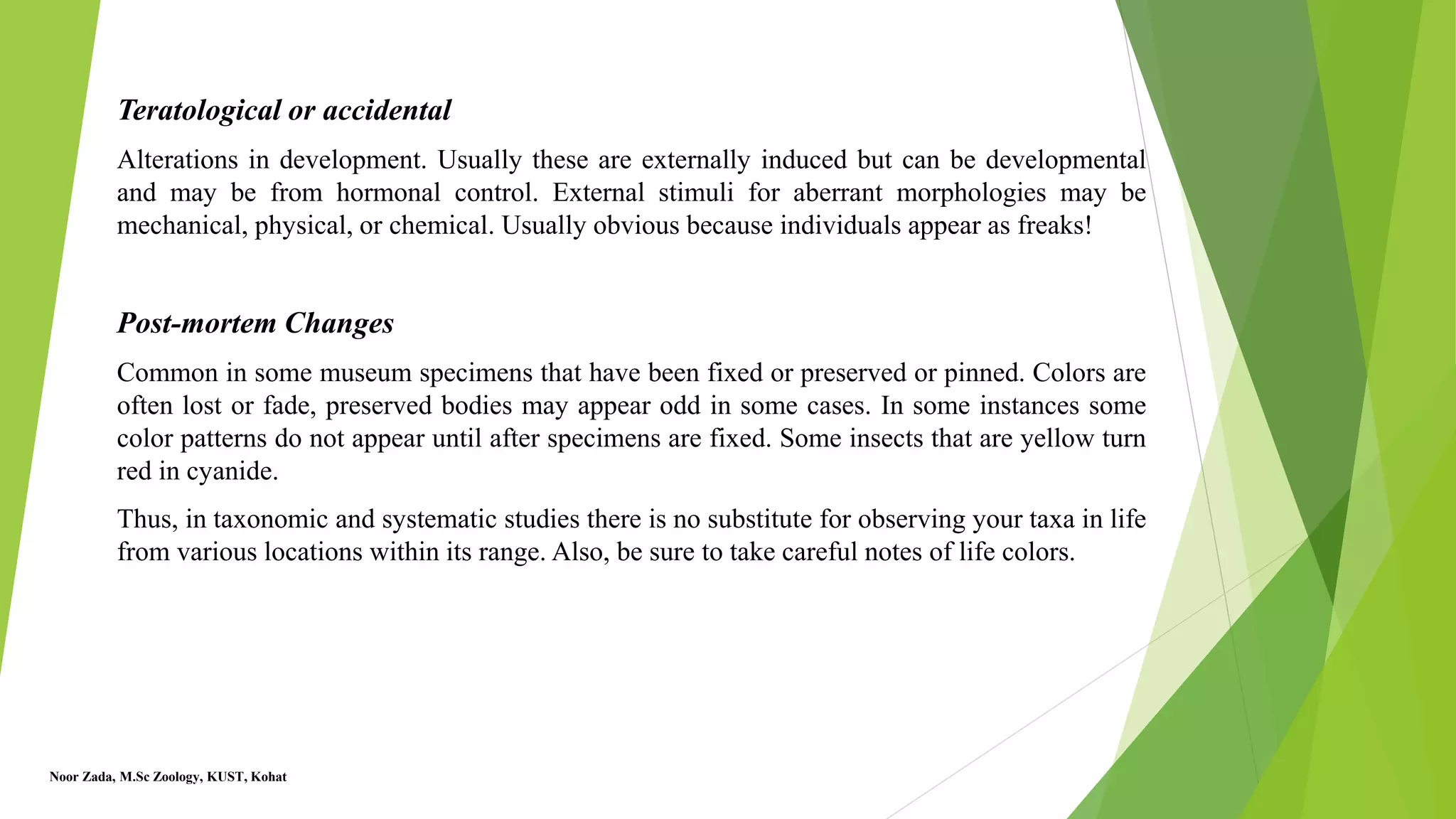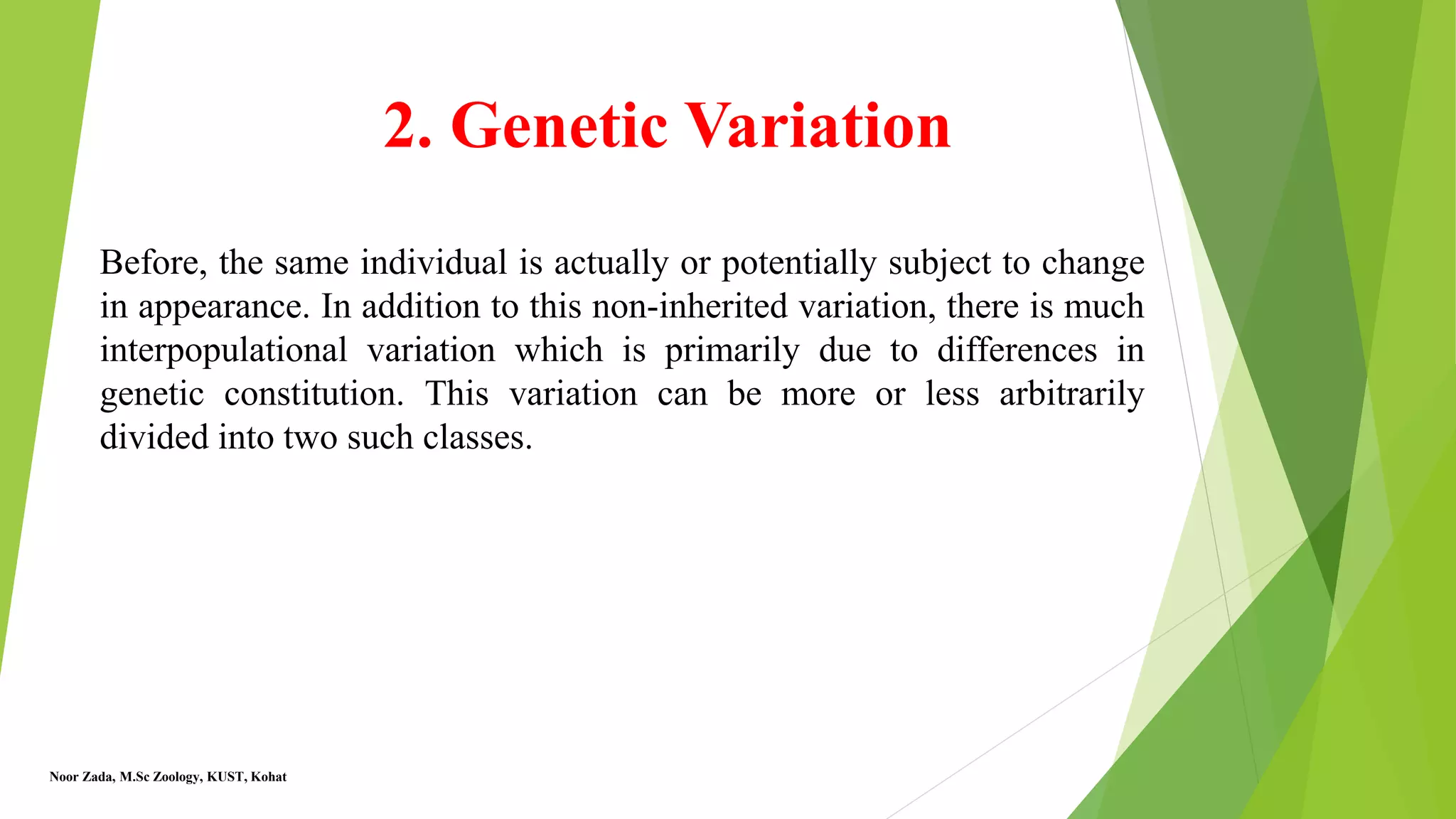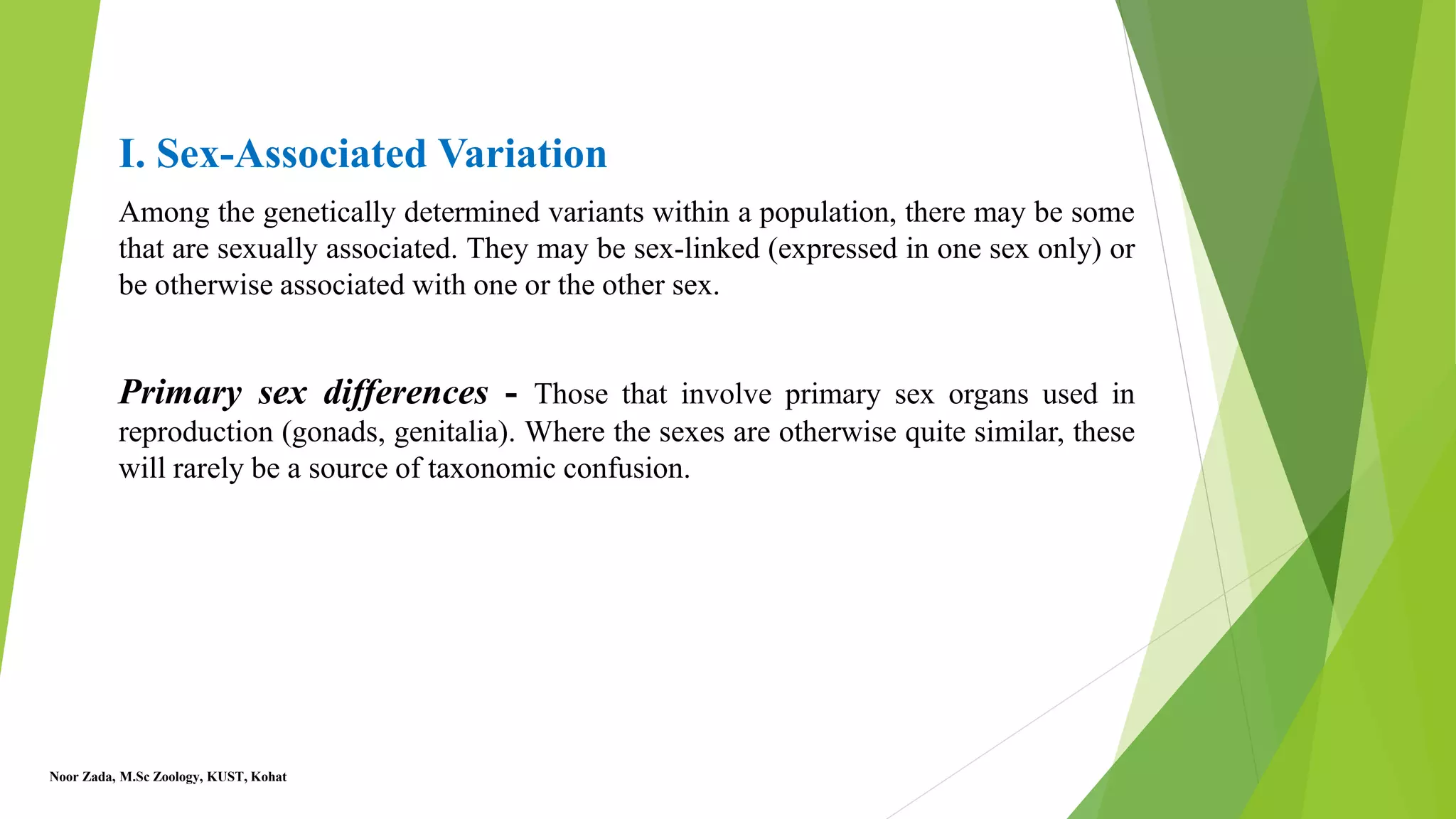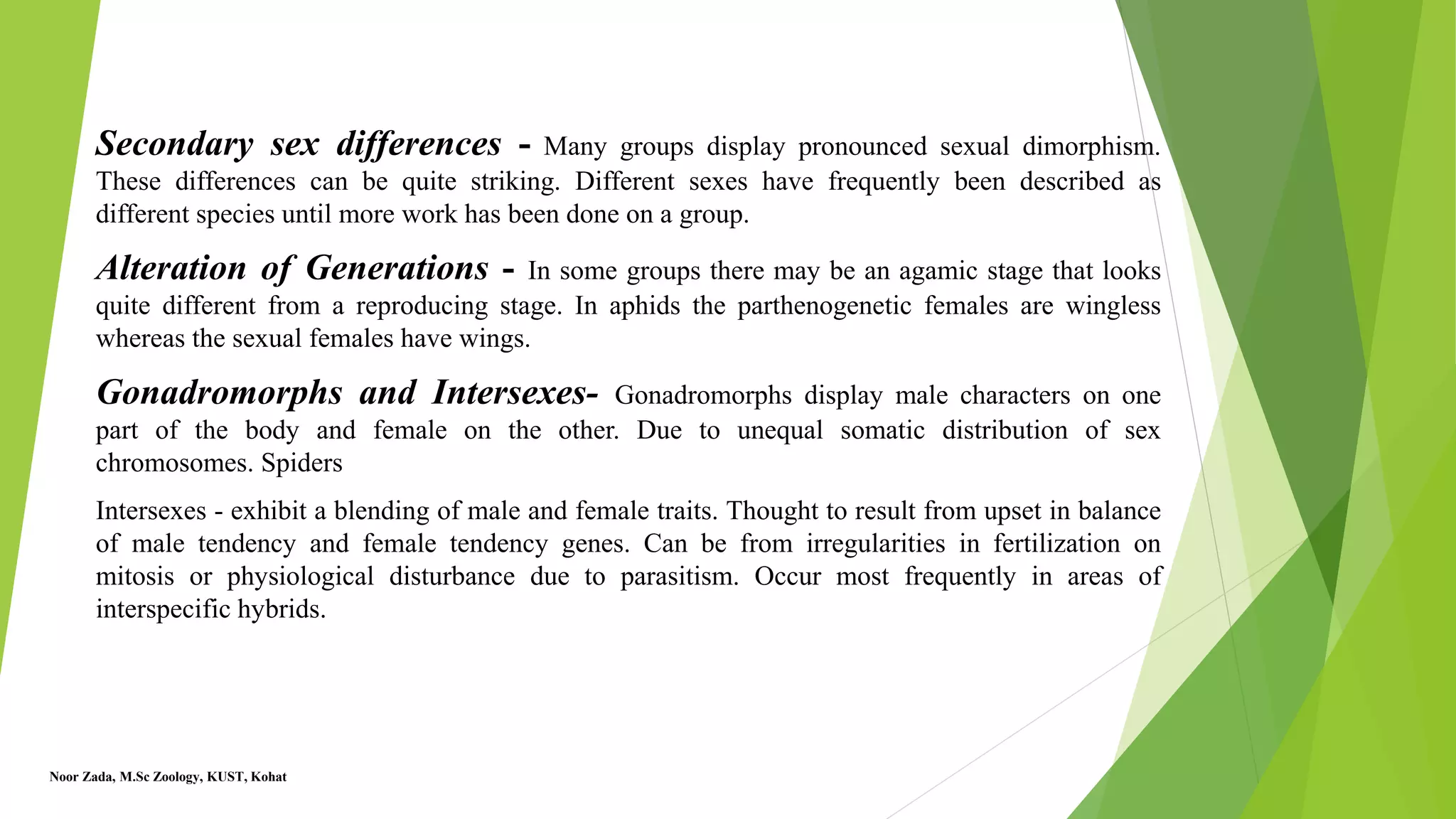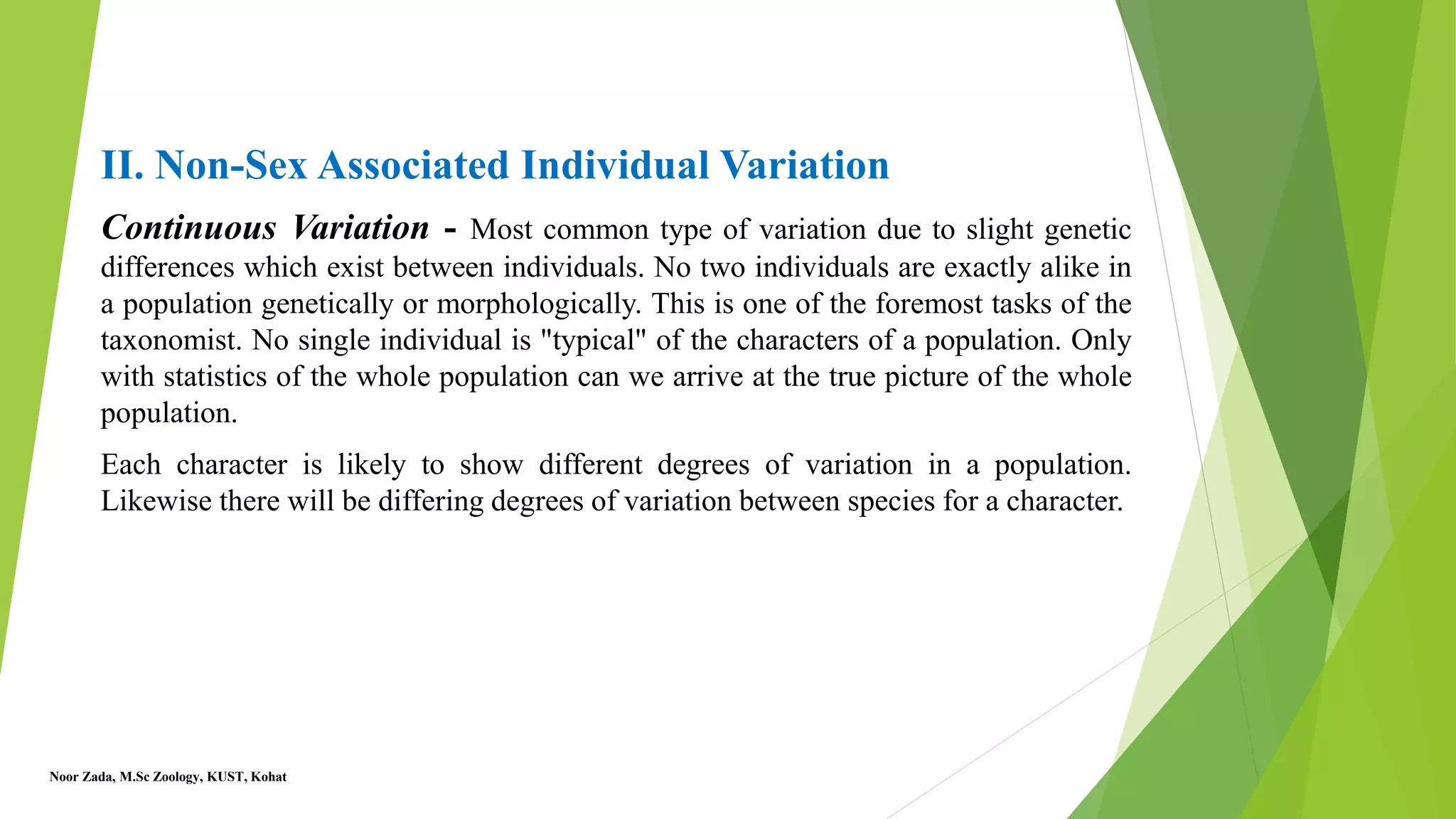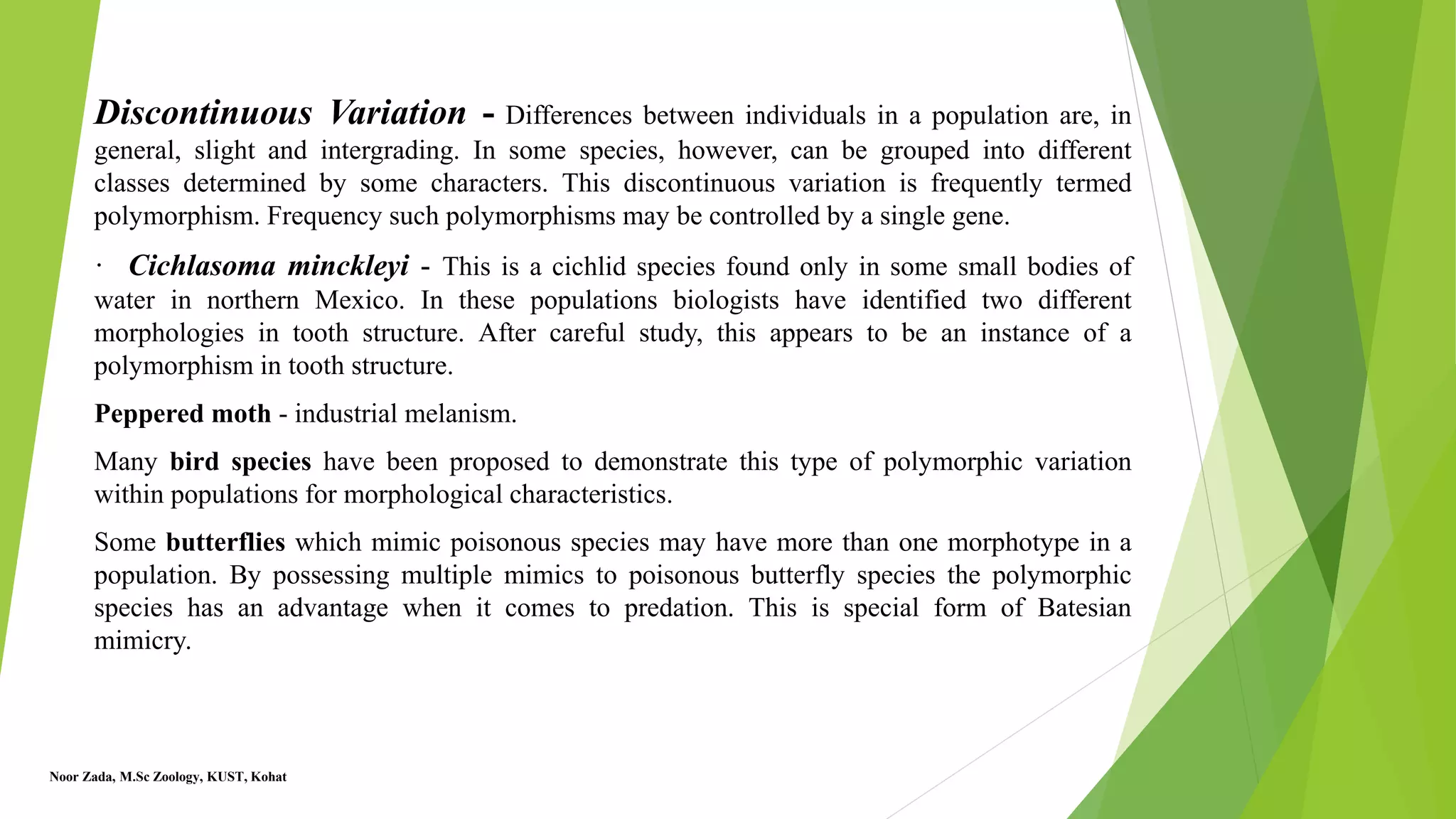There are three main types of variation: geographic, sexual, and individual. Geographic variation occurs over space and can lead to clinal variation correlated with environmental factors. Sexual variation involves differences between males and females, often involving primary and secondary sexual characteristics. Individual variation occurs within the lifetime of an organism and can be due to factors like age, environment, parasites, and genetics. Genetic variation includes sex-associated traits and non-sex associated continuous or discontinuous variation within populations.
